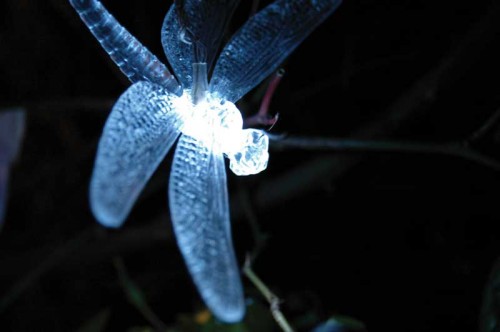Oliver Thornwhistle On—Luciérnagas
Here come Guatemala’s Fireflies: It must be May, or is it?
written by S.C. Johnson
All seafarers know the importance of light, as in lighthouse or beacon. Before GPS, charts showed lights sequences, say one short and two long flashes of lights followed by darkness, and if the navigator spotted the right sequence, he knew where he was. Lighthouses were built to repel, ward humans from danger.
But what if the opposite were true and sequences of light, say one short, two long, were meant to attract, not repel? Enter the luciérnaga, Guatemala’s firefly or lightning bug. Fireflies are omnipresent in literature dealing with summer in the Northern Hemisphere. It’s hard to imagine a fictional summer without hot nights and fireflies. And is there one of us who did not as a child collect a jar full of fireflies in the evening and go to sleep by its ever-dimming glow? (“Hey, Mom, he’s asleep, let the fireflies out.”) Likewise, Guatemala’s fireflies mean that the rainy season, or winter, invierno is approaching. Fireflies have always meant “May.”
No more. Guatemala’s luciérnagas are coming out earlier and earlier in the year, along with the spectacular purple flowers of the jacaranda, once thought of as the Easter tree, but now blooming as early as February. Climate change, global warming, whatever.
The flashes of light from fireflies have a purpose. Finding the right boyfriend or girlfriend for a firefly is a complicated task. There are several species, each with a distinctive flash pattern. Boy must meet girl and girl meet boy with identical light patterns. If you are a one long, two short and she is a two long, take a wave-off, it’s not going to happen.
Fireflies have fascinated man since the beginning, evidently scaring the scientist who first dubbed the phosphorescent substance that emits light luciferin, after a nickname for the devil. (Poor Devil, always getting the short end of the stick—in many countries a “Lucifer” is a match.)
Fireflies are actually beetles, living underground as grubs before emerging to flit and flash about and are sometimes called glowworms as they emerge. Their chief protective mechanism seems to be their bitter taste, as any puppy can attest. Curiously, they are generally not known to eat as adults, apparently having stored up enough food as underground larvae.
Naturally the Mayan Popul Vuh depicts fireflies, usually as stars but in one curious case as the glowing ashes on cigars. That was before anti-smoking regulations.

Pingback: Oliver Thornwhistle On—Night & Day | Revue Magazine